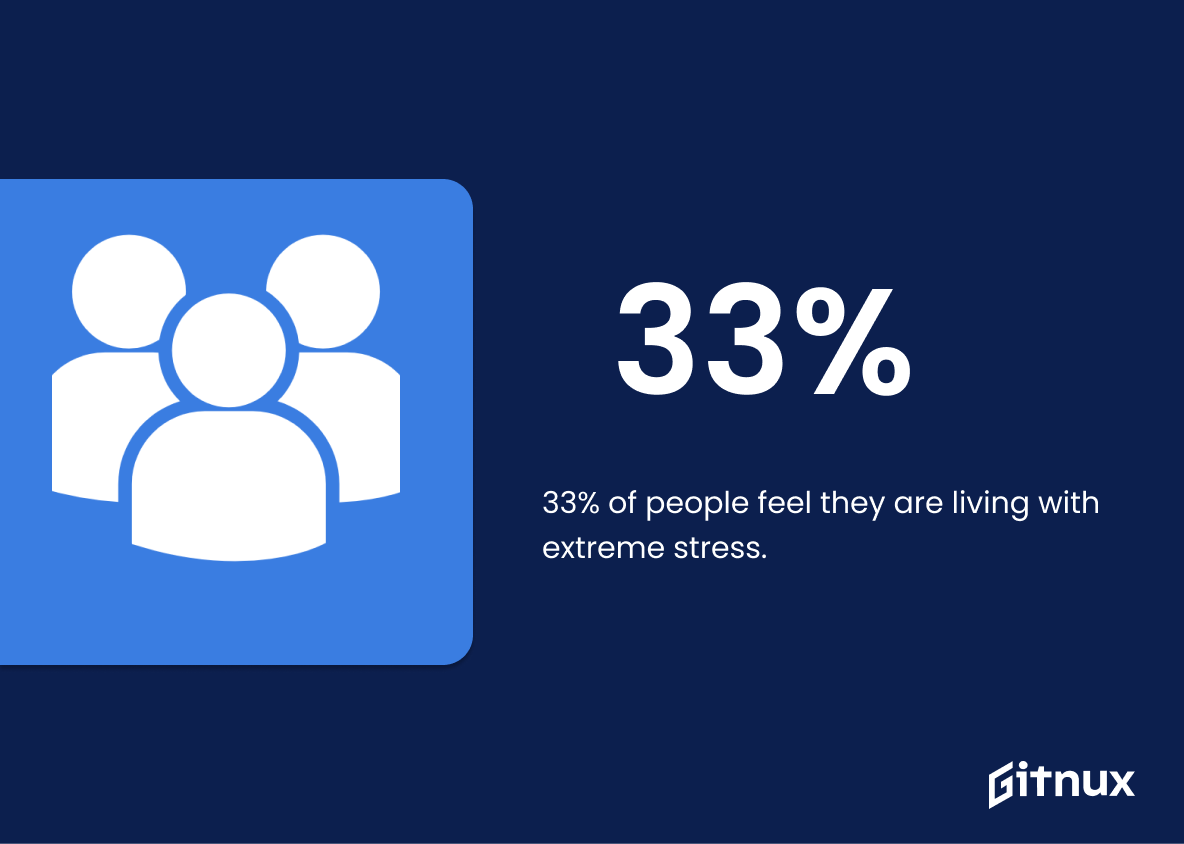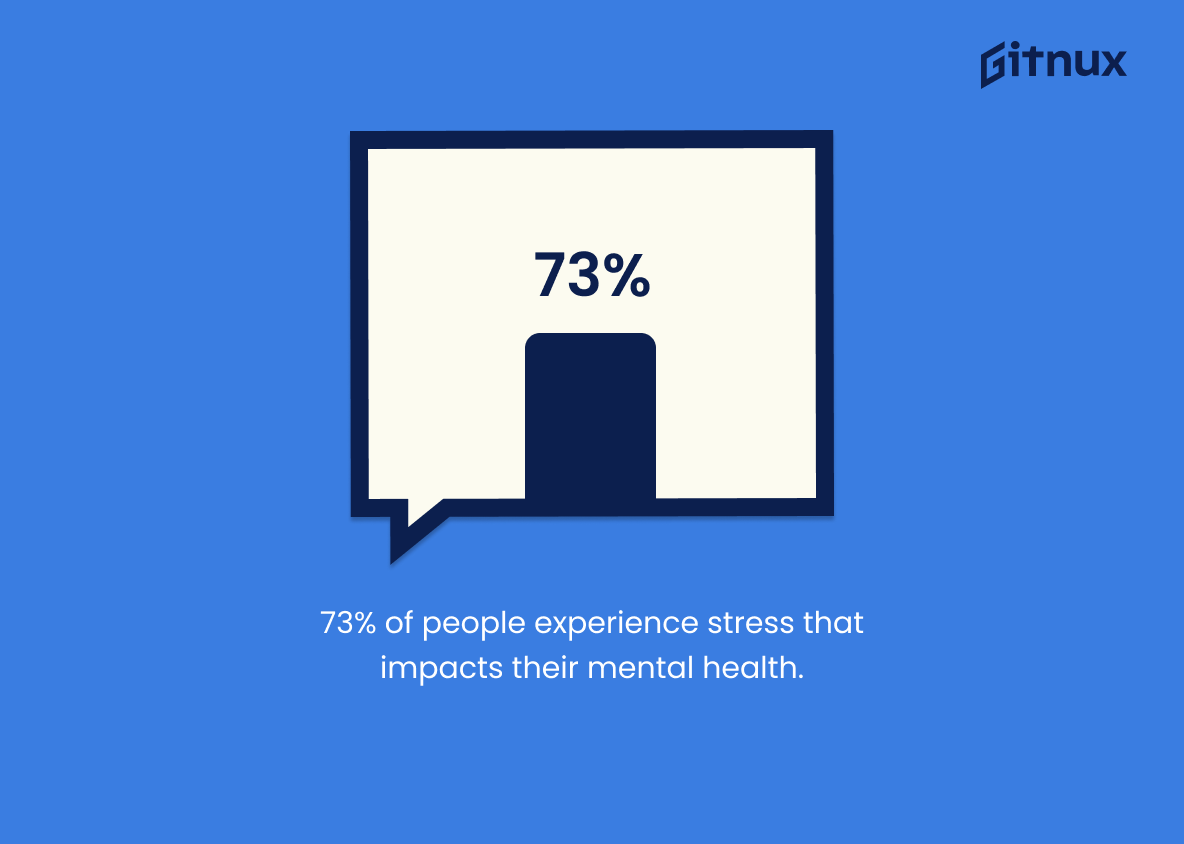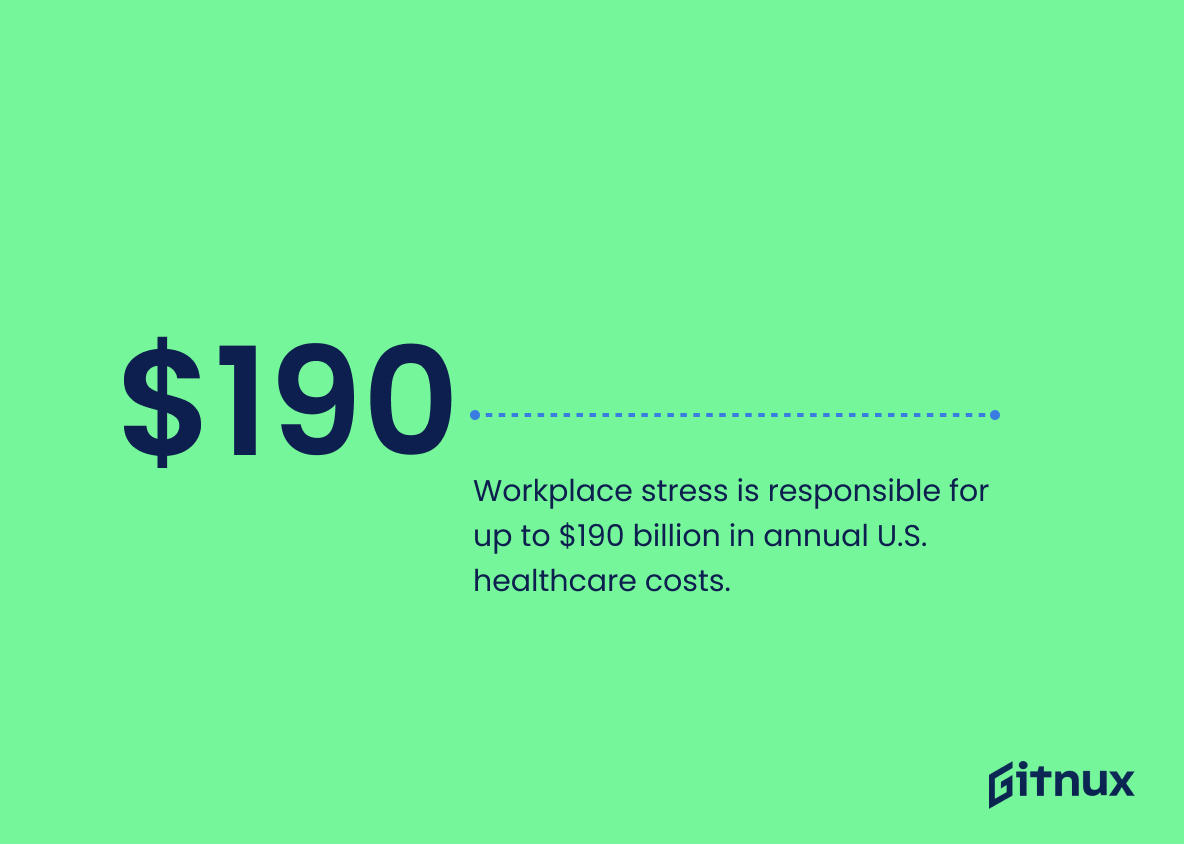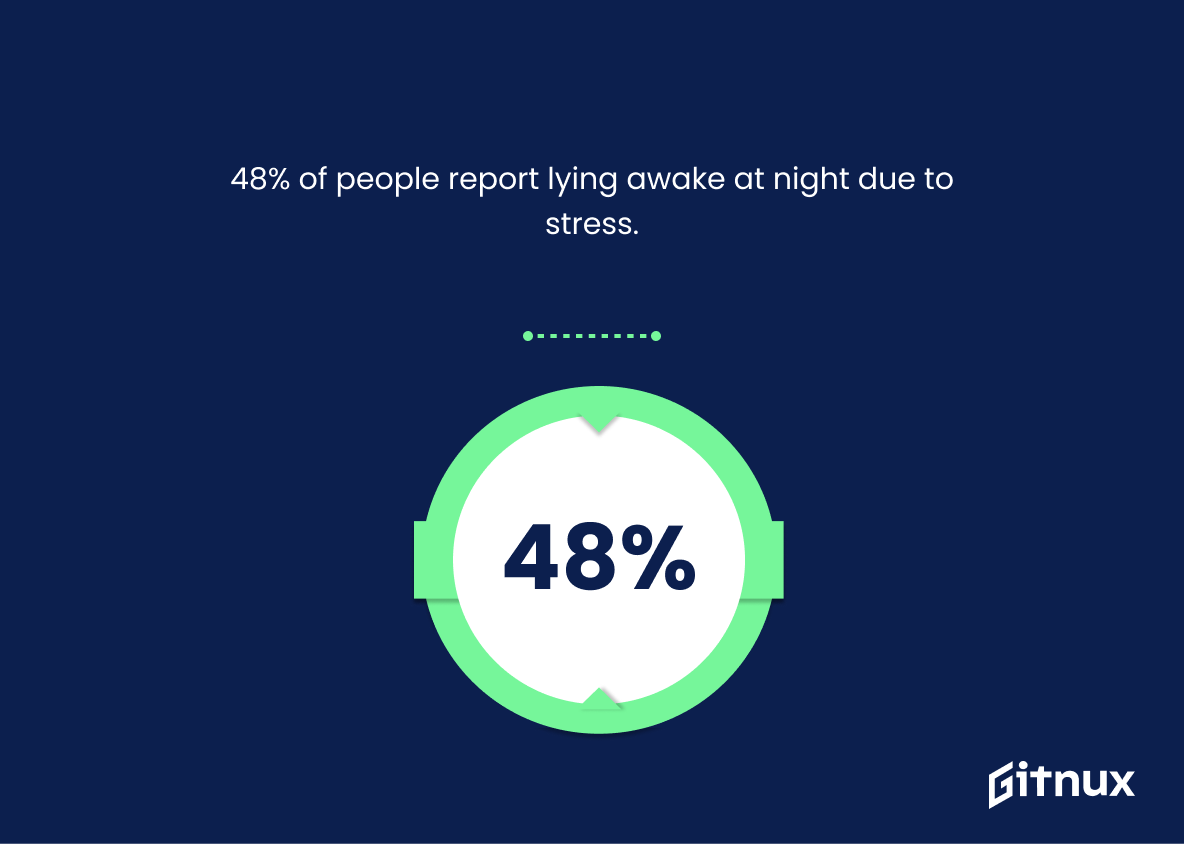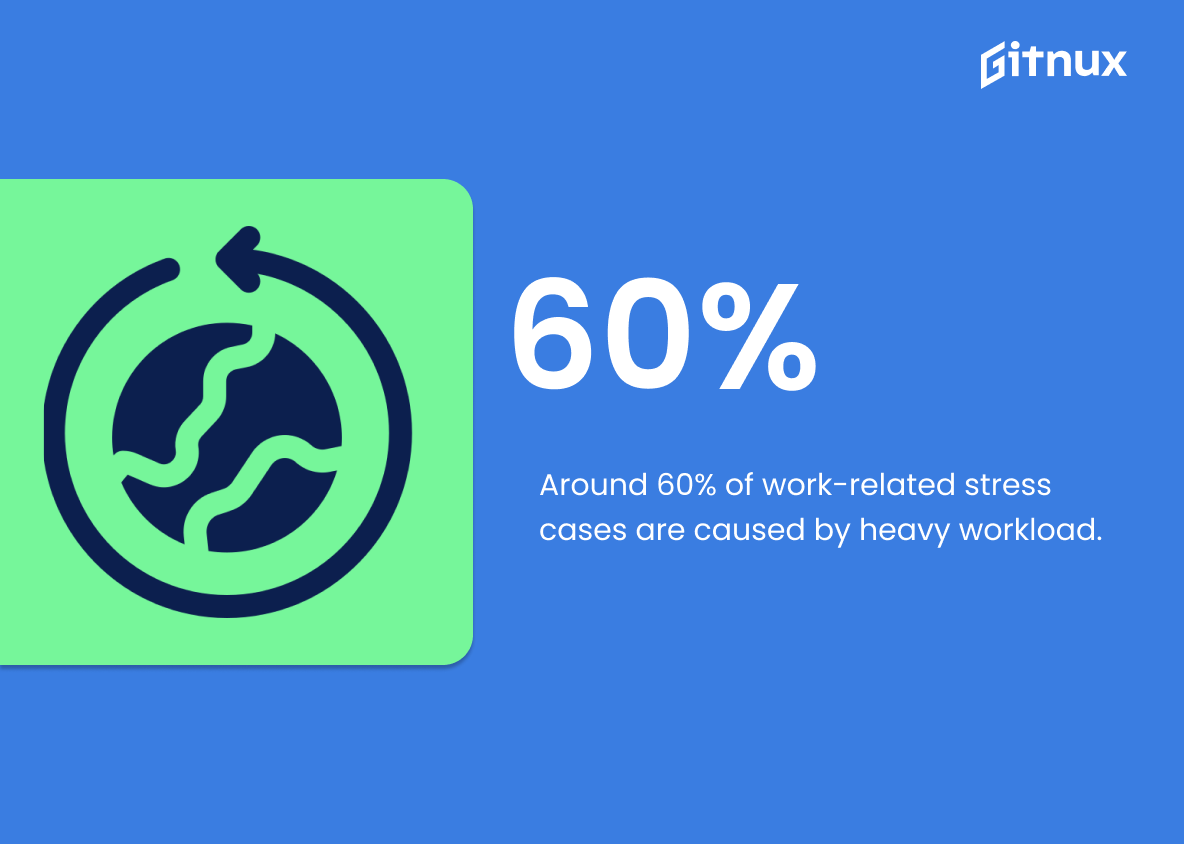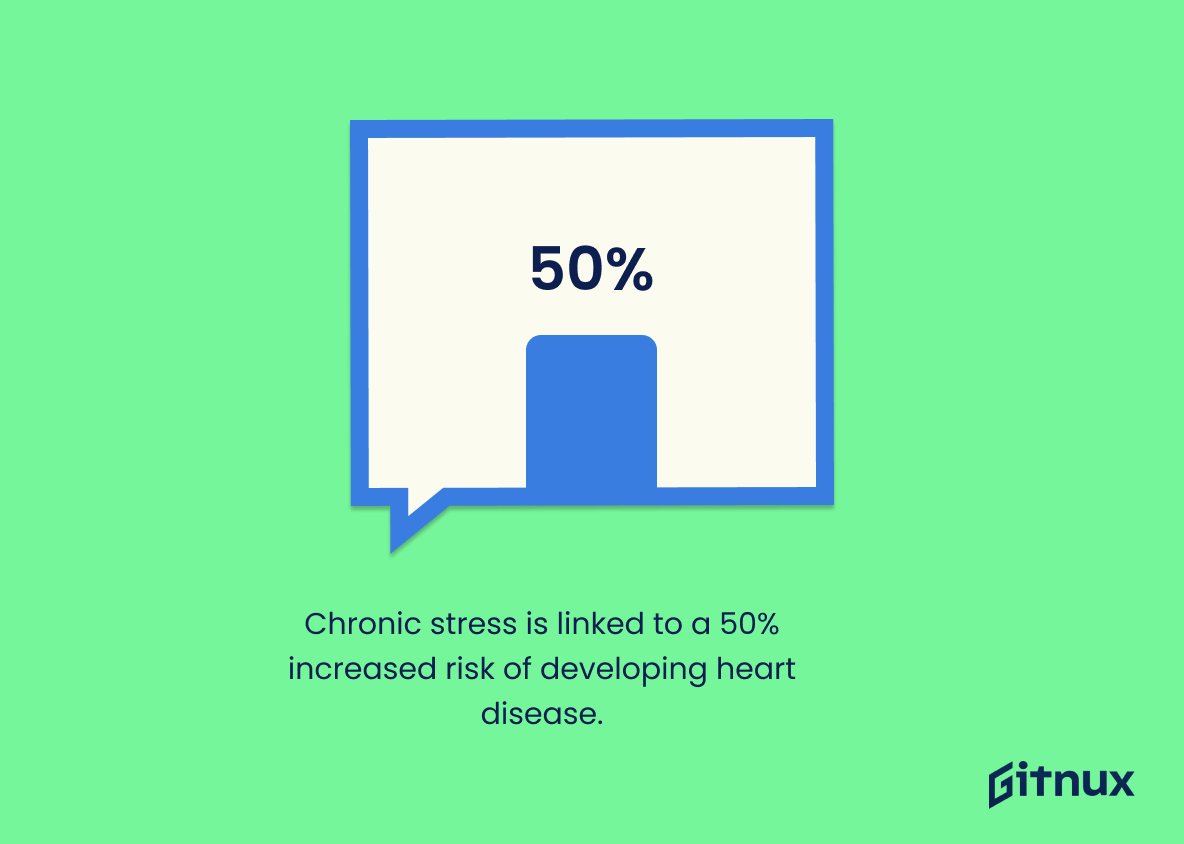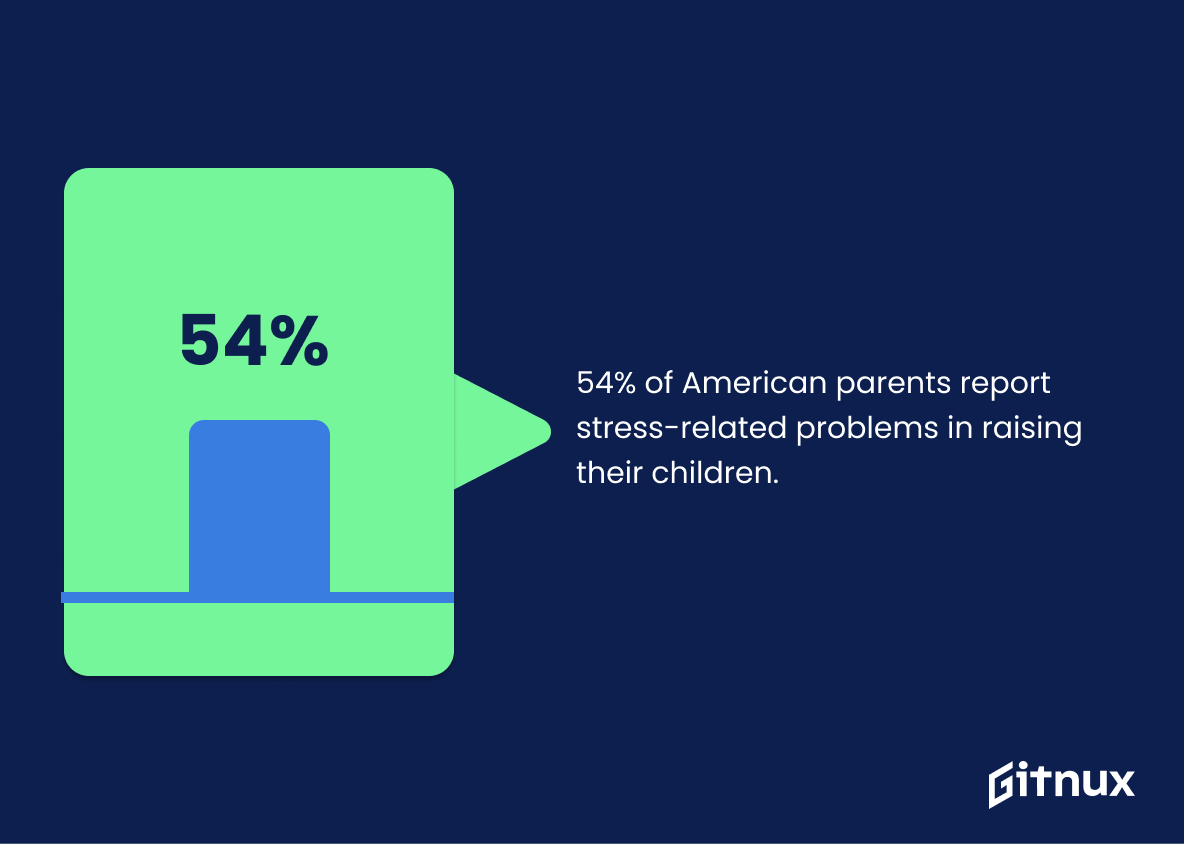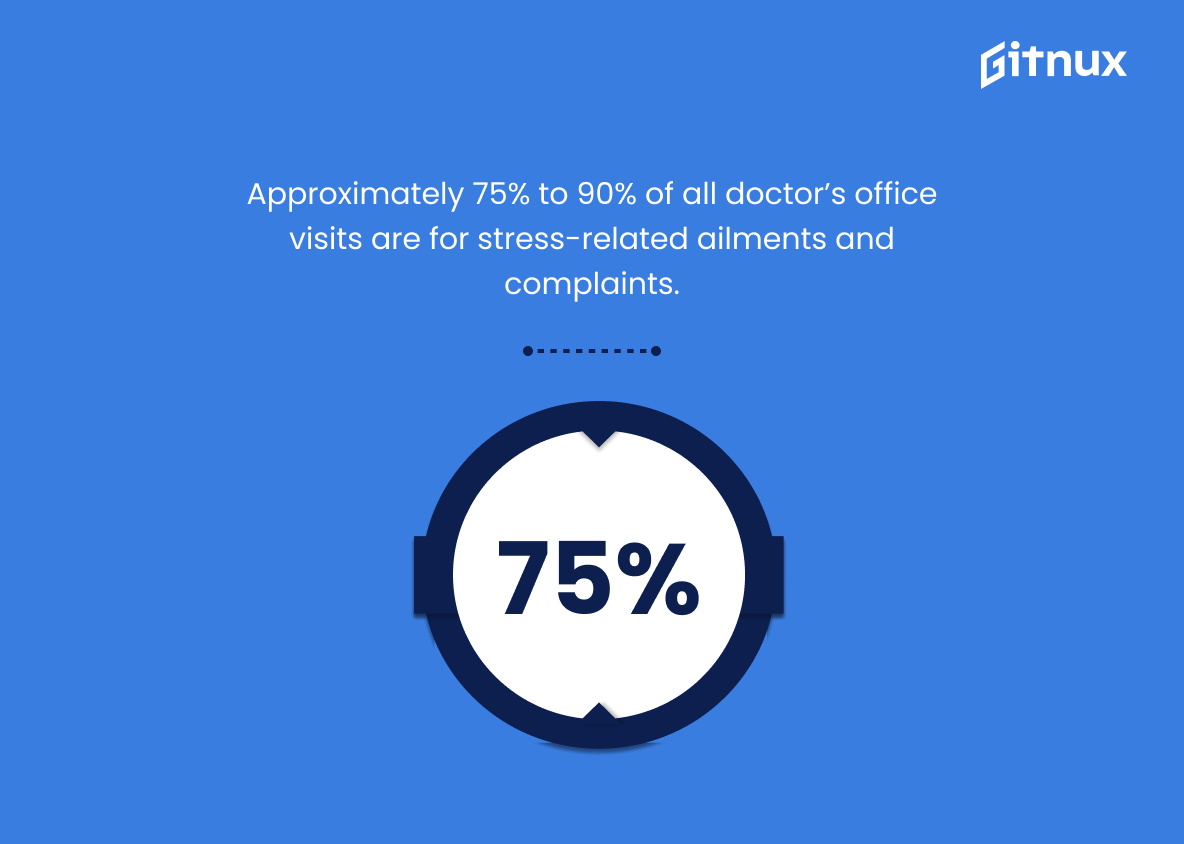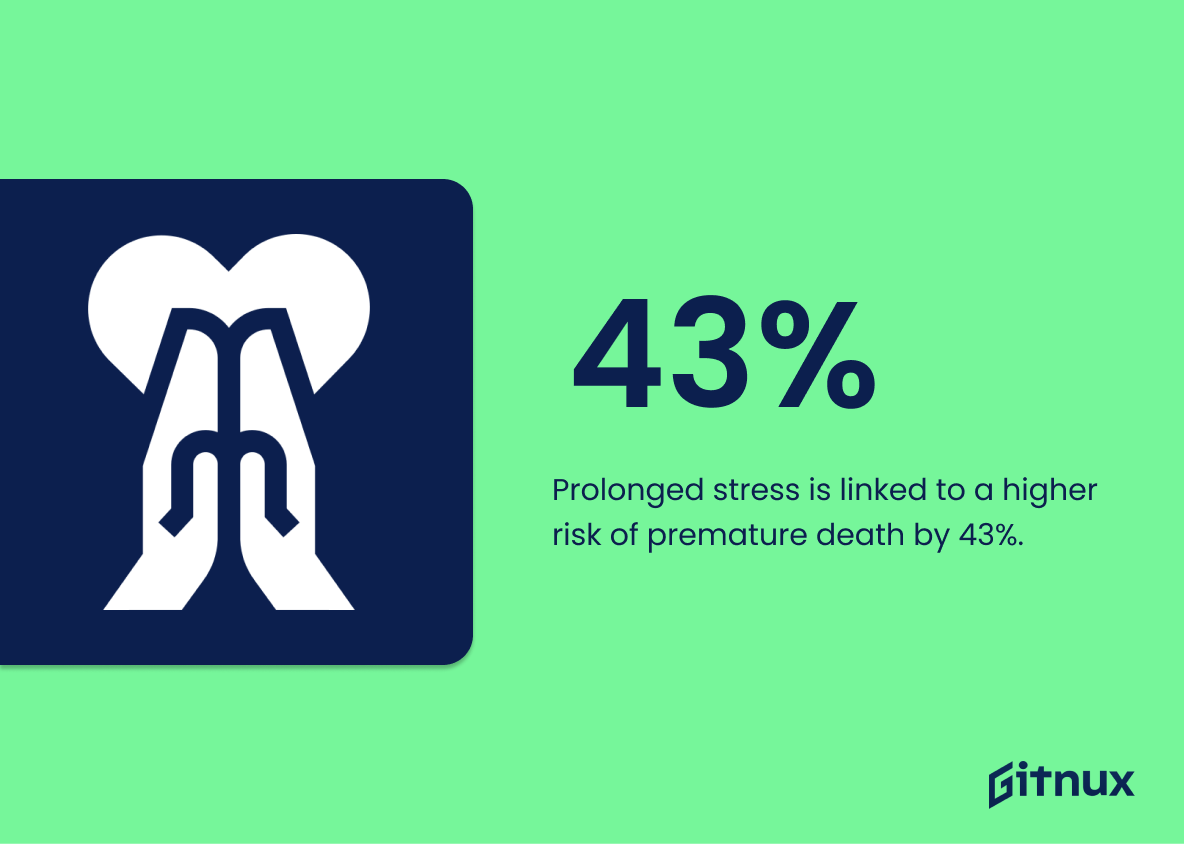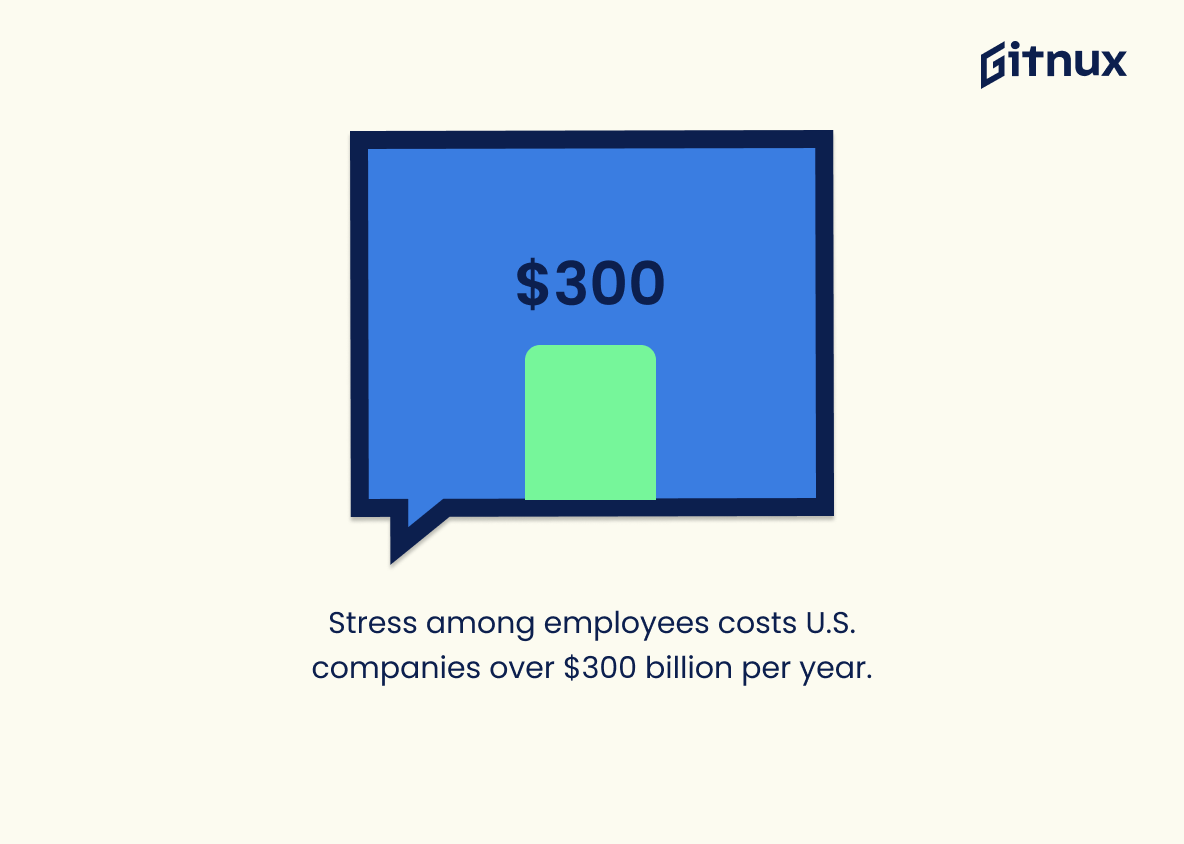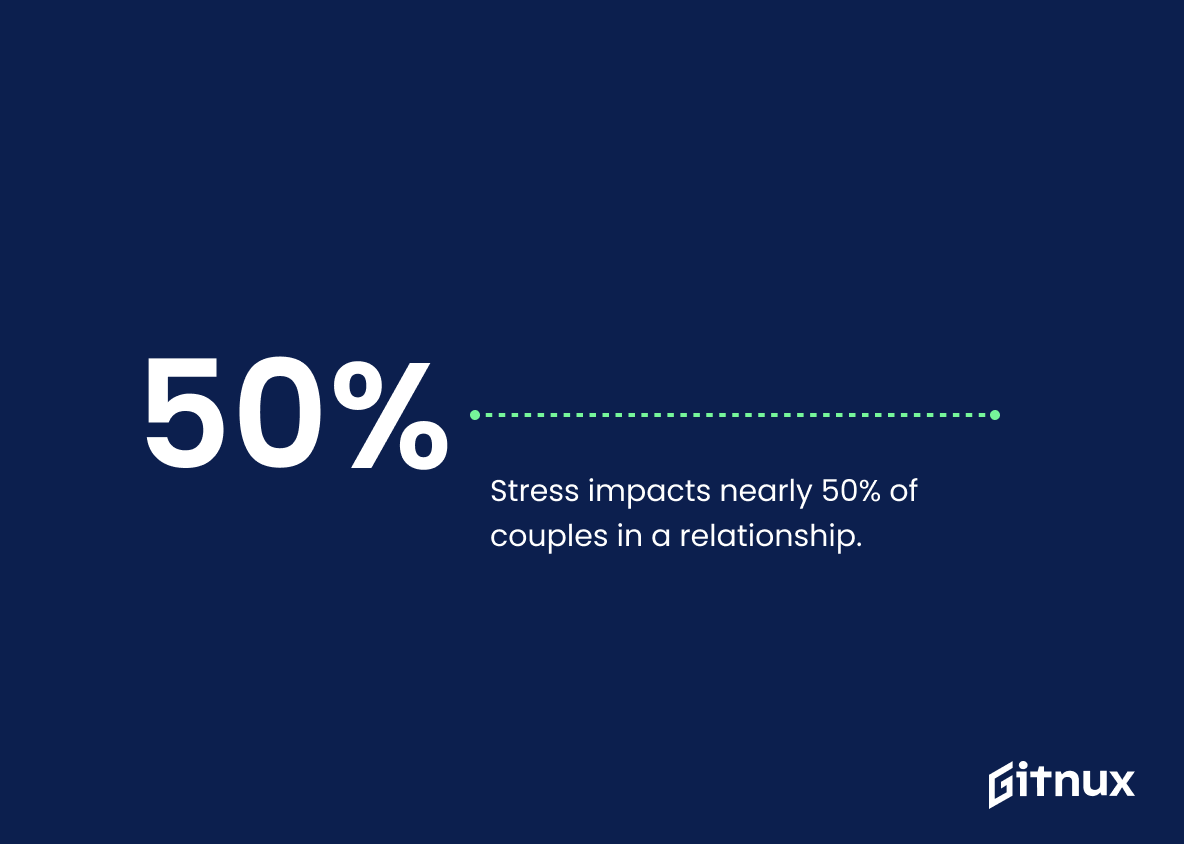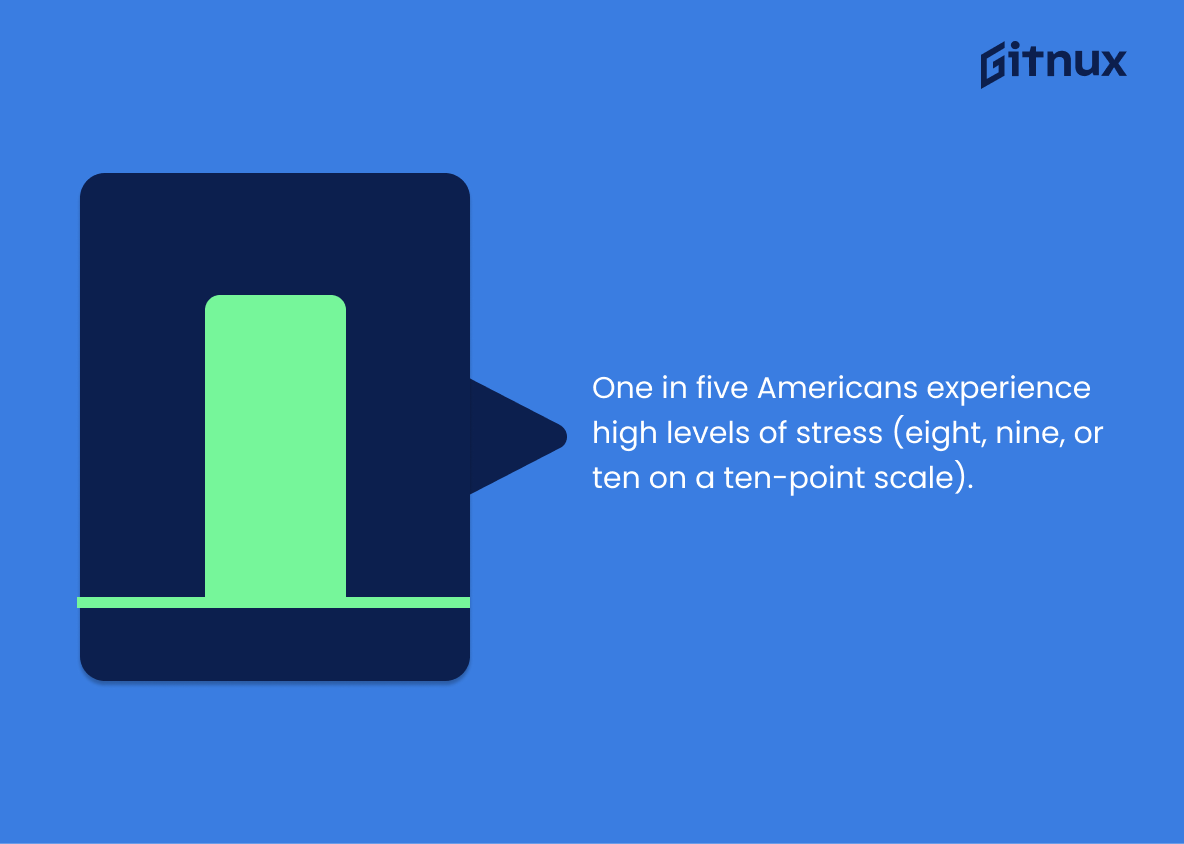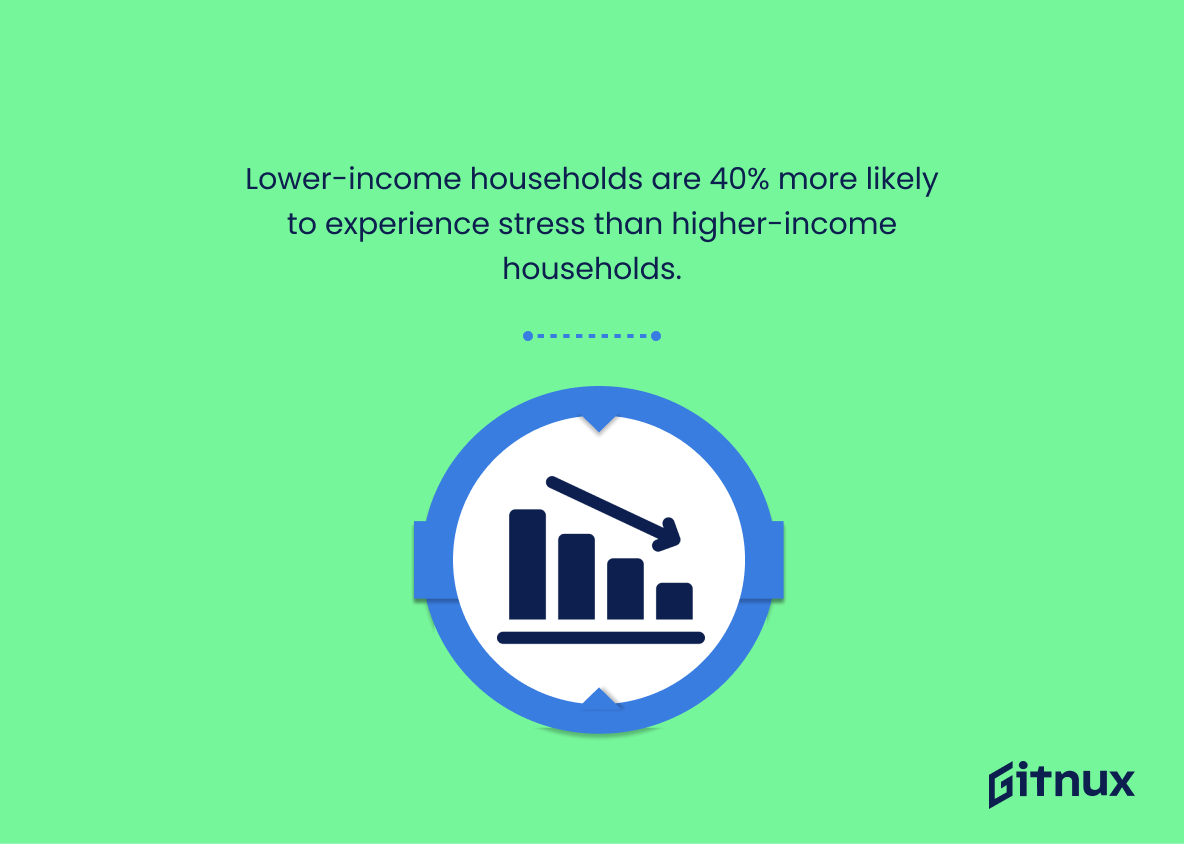Stress is a major problem in today’s world, and the statistics are staggering. According to research from Stress.org, 77% of people regularly experience physical symptoms caused by stress. The American Psychological Association (APA) has linked this same stress directly to the six leading causes of death: heart disease, cancer, lung ailments, accidents, cirrhosis of the liver and suicide. Even more alarming is that 33% of people feel they are living with extreme stress while 73% report it impacting their mental health negatively.
The financial cost associated with workplace-related stress can be immense as well; up to $190 billion per year in U.S healthcare costs alone according to Forbes Magazine. And 55% Americans report feeling stressed during the day – significantly higher than global average at 35%. 48%, meanwhile lie awake at night due to their worries and anxieties about life events or work related issues while 60 % attribute heavy workloads for causing them undue pressure on top of other factors such as family responsibilities or finances which contribute towards job-related anxiety levels rising even further still..
Chronic long term exposure can have serious implications too; increasing one’s risk factor for developing heart disease by 50%, premature death by 43%, not forgetting college students who suffer overwhelming anxiety due 54 percent parents reporting similar problems when raising children plus an estimated 120 000 deaths annually attributed solely down to job related pressures within America itself . It doesn’t stop there either since lower income households being 40 percent more likely than those earning higher wages experiencing greater amounts daily whilst 58 percent employees indicating how much impactful it affects overall satisfaction ratings regarding employment status ..
It goes without saying then that understanding just how damaging prolonged periods under duress really does take its toll both mentally & physically should never be underestimated nor taken lightly given all these facts combined together making clear why tackling any form ongoing distress needs addressing sooner rather later before things spiral out control beyond repairable limits so please do bear mind next time you find yourself struggling cope better manage whatever situation arises accordingly going forward thank you very much indeed reading my blog post hope enjoyed learning something new here today goodbye now until we meet again soon bye .
Stress Kills Statistics Overview
33% of people feel they are living with extreme stress.
This statistic serves as a stark reminder of the prevalence of extreme stress in our lives. It highlights the need for greater awareness of the dangers of stress and the importance of taking steps to reduce it. It also serves as a call to action for those who are struggling with stress to seek help and support. In short, this statistic is a powerful reminder of the real and present danger of stress and its potentially deadly consequences.
73% of people experience stress that impacts their mental health.
This statistic is a stark reminder of the prevalence of stress and its devastating effects on mental health. It serves as a powerful reminder that stress is a serious issue that needs to be addressed, and that it can have a profound impact on our mental wellbeing. It is a call to action to take steps to reduce stress and improve mental health.
Workplace stress is responsible for up to $190 billion in annual U.S. healthcare costs.
This statistic serves as a stark reminder of the immense financial burden that workplace stress can have on the U.S. healthcare system. It highlights the need for employers to take proactive steps to reduce stress in the workplace, as the costs associated with it can be staggering. This statistic is a powerful reminder that stress kills, and that it should not be taken lightly.
; 55% of Americans report feeling stress during the day, significantly higher than the global average of 35%.
This statistic serves as a stark reminder of the prevalence of stress in the United States, and how it is significantly higher than the global average. It is a powerful illustration of the need to address the issue of stress in the US, and how it can have serious consequences if left unchecked. This statistic is a call to action for individuals, organizations, and governments to take steps to reduce stress and its associated risks.
48% of people report lying awake at night due to stress.
This statistic serves as a stark reminder of the devastating effects of stress on our lives. It paints a vivid picture of the countless individuals who are struggling to cope with the pressures of life, unable to find peace and rest even in the comfort of their own beds. It is a powerful illustration of how stress can take a toll on our mental and physical health, and how it can be a silent killer if left unchecked.
Around 60% of work-related stress cases are caused by heavy workload.
This statistic is a stark reminder of the dangers of overworking. It highlights the fact that too much work can have serious consequences on our mental and physical health. It serves as a warning to employers and employees alike that taking on too much can have serious repercussions. This statistic is a powerful reminder that stress kills, and that it is important to take steps to reduce stress in the workplace.
Chronic stress is linked to a 50% increased risk of developing heart disease.
This statistic is a stark reminder of the potentially devastating effects of chronic stress on our health. It highlights the importance of taking steps to reduce stress levels in order to protect our hearts and overall wellbeing. It is a powerful reminder that stress kills, and that we must take action to protect ourselves.
62% of college students report experiencing overwhelming anxiety due to stress.
This statistic serves as a stark reminder of the immense pressure that college students are under. It highlights the fact that stress can have a serious impact on mental health, and that it is a problem that needs to be addressed. It is a powerful illustration of the need to take action to reduce stress levels and ensure that students are able to cope with the demands of college life.
54% of American parents report stress-related problems in raising their children.
This statistic serves as a stark reminder of the immense pressure that American parents face when raising their children. It highlights the fact that stress can have a serious impact on the wellbeing of both parents and children, and that it should not be taken lightly. This statistic is a powerful reminder that stress can have serious consequences, and that it is important to take steps to reduce stress in order to ensure the health and wellbeing of both parents and children.
Approximately 75% to 90% of all doctor’s office visits are for stress-related ailments and complaints.
This statistic serves as a stark reminder of the prevalence of stress-related ailments and complaints in our society. It highlights the need for greater awareness and understanding of the dangers of stress, and the importance of taking steps to reduce and manage it. This statistic is a powerful reminder that stress can have serious consequences, and that it is essential to take action to protect our health and wellbeing.
Prolonged stress is linked to a higher risk of premature death by 43%.
This statistic is a stark reminder of the potentially fatal consequences of prolonged stress. It serves as a powerful warning to those who may be struggling with stress, and highlights the importance of taking steps to reduce stress levels and improve overall wellbeing.
Stress among employees costs U.S. companies over $300 billion per year.
This statistic is a stark reminder of the immense financial burden that stress places on businesses in the United States. It serves as a powerful illustration of the devastating economic impact of stress, and the urgent need for employers to take proactive steps to reduce stress in the workplace.
Stress impacts nearly 50% of couples in a relationship.
This statistic is a stark reminder of the devastating effects of stress on relationships. It highlights the importance of understanding and managing stress in order to maintain healthy relationships. It is a powerful reminder that stress can have a serious impact on our relationships and that it is essential to take steps to reduce stress in order to protect our relationships.
One in five Americans experience high levels of stress (eight, nine, or ten on a ten-point scale).
This statistic is a stark reminder of the prevalence of stress in our society. It highlights the fact that a significant portion of the population is struggling with a serious issue that can have serious consequences if left unchecked. This makes it all the more important to spread awareness about the dangers of stress and how to manage it, which is the focus of the blog post.
Lower-income households are 40% more likely to experience stress than higher-income households.
This statistic is a stark reminder of the reality that financial hardship can have a serious impact on mental health. It highlights the need for greater access to resources and support for those in lower-income households, who are disproportionately affected by stress. This is especially pertinent in the context of a blog post about Stress Kills Statistics, as it serves to emphasize the importance of taking action to reduce stress in order to protect our physical and mental wellbeing.
58% of employees indicate stress is a major factor in determining their job satisfaction.
This statistic is a powerful reminder that stress is a major factor in job satisfaction, and it serves as a stark warning that unchecked stress can have serious consequences. It highlights the importance of taking steps to reduce stress in the workplace, and it underscores the need for employers to prioritize the mental health of their employees.
Conclusion
The statistics presented in this blog post demonstrate the far-reaching and devastating effects of stress. From physical symptoms to mental health issues, workplace costs, relationship problems, and even premature death – it is clear that stress can have a serious impact on our lives. It is important for us to recognize these risks so we can take steps towards reducing our own levels of stress as well as helping those around us who may be struggling with their own.
References
0. – https://www.apa.org
1. – https://www.pewresearch.org
2. – https://www.measureofamerica.org
3. – https://www.mentalhealth.org.uk
4. – https://www.news.gallup.com
5. – https://www.health.harvard.edu
6. – https://www.forbes.com
7. – https://www.ncbi.nlm.nih.gov
8. – https://www.businesswire.com
9. – https://www.zety.com
10. – https://www.stress.org
11. – https://www.consumerreports.org
12. – https://www.compsych.com
